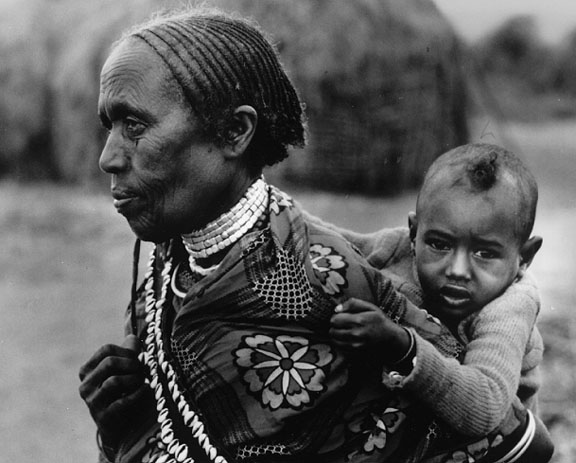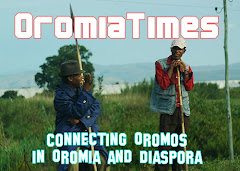The U.S. proxy war in Africa
DAVID WHITEHOUSE reports on why Ethiopia went to war against its similarly poverty-stricken neighbor--and why the U.S. government supported it.
ETHIOPIAN FORCES swept through southern Somalia in the last two weeks of 2006 to drive Islamist militias from the capital of Mogadishu and install a handpicked regime friendly to the U.S.
With its tanks and MiG fighter-bombers, Ethiopia far outgunned Somalia’s Union of Islamic Courts (UIC), whose militias repeatedly fell back and broke apart until those remaining fled to remote areas in the country’s south.
The stated reason for the invasion was to root out radical Islamists who have allegedly steered the UIC toward imposing Taliban-style rule on Somalia. Somalia has lacked a central government since 1991, when the overthrow of U.S.-backed dictator Mohamed Siad Barre threw the country into the hands of rival warlords.
The new “Transitional Federal Government” (TFG) that took power after Ethiopia’s invasion--first formed in 2004 by a conference convened in neighboring Kenya and dominated by Ethiopia--represents the thirteenth attempt to form a government.
Its survival is questionable. The TFG is headed by a veterinarian with no political experience and a Somali who has spent decades in Ethiopia without setting foot in Mogadishu since 1977. Called a “two-legged stool” by some Somalia specialists, the TFG has no significant base in the Hawiye clan that predominates among the capital’s 2 million residents.
And now that Islamic courts have been stripped of authority, clan-based warlords are popping up again. They can easily wreck a government that lacks a local social base and depends on foreigners for its defense.
In any case, the Ethiopian army is likely to leave within weeks--in order to avoid the humiliating fate the warlords dealt to U.S. forces in 1993, which was depicted in Black Hawk Down.
But Ethiopia’s dictator Meles Zenawi has already achieved his real objectives, anyway--not to install a viable government, but to prevent Somalia’s Islamists from trying to form one; and to win the favor of the U.S. for loyal service in the “war on terror.”
- - - - - - - - - - - - - - - -
THE U.S. played a key role in bringing the Islamists to prominence in the first place. By backing the TFG from its formation in 2004, the U.S. signaled its support for Ethiopian interference in Somalia’s politics. This threat led the UIC, then a loose confederation of 11 sharia (Islamic law) courts in Mogadishu, to create militias in 2005.
Alarmed by the militias--and the prominence of Salafist radicals in them--the U.S. used the CIA to engineer an “anti-terrorist” force based among the country’s warlords in early 2006. U.S. direction of the warlords was supported from Djibouti--the tiny coastal neighbor of Ethiopia, Eritrea and Somalia--by a 1,500-person Pentagon “task force” set up in 2002 to coordinate intervention by the U.S. and its proxies in the Horn of Africa.
After four months of fighting, the better-disciplined court militias defeated the warlords in June. In the vacuum left by the retreat of the warlords, the UIC began to exert control as a political force for the first time.
Despite their harsh punishments--and restrictions on movies, mixed-gender celebrations and women’s freedom of movement--the courts drew new support for changes that followed the defeat of the warlords. These included a drop in violence against civilians and a fall in food prices due to the abolition of warlord checkpoints that levied extortionate “taxes” on transport. With help from Mogadishu’s UIC, new sharia courts began to appear in other parts of southern Somalia.
By the beginning of December, the U.S. was ready for a confrontation with the Islamists. With African Union (AU) support, the United Nations (UN) Security Council authorized a regional “peacekeeping” force to protect the stooge TFG, which was then biding its time in Somalia’s second city of Baidoa. The AU force was to be exempt from a UN embargo on sending arms to Somalia.
Since June, Ethiopia had already infiltrated thousands of troops into the Baidoa area, and the UIC correctly saw the UN resolution as an invitation to the Ethiopians to launch an assault on Mogadishu. In the first weeks of December, militants of the UIC clashed with Ethiopian and TFG troops near Baidoa, which provided the pretext for Ethiopia’s lightning sweep to the capital at the end of the year.
The promise of an AU “peacekeeping” force--now being quickly cobbled together from reluctant regional volunteers--offered Ethiopia’s Meles the chance to be a successful invader without taking the heat of being Somalia’s occupier.
This one-two punch, reminiscent of previous U.S. wars that led to multilateral “peacekeeping,” bears the marks of a strategy dreamt up in Washington. This time, though, the new government could fall before there is any “peace” to keep.
- - - - - - - - - - - - - - - -
WHAT ACCOUNTS for the rise of Islamic courts, why was Ethiopia hostile to them, and what will follow their downfall?
The court movement has always included a militant “jihadi” wing--a fundamentalist minority that became more prominent as the “war on terror” put armed defense closer to the center of the courts’ agenda. A few leading members of the court militias may have ties to al-Qaeda, including the teams that bombed U.S. embassies in Kenya and Tanzania in 1998. But jihad was never the courts’ reason for being.
After the 1991 collapse of the central government, sharia courts began to appear as an initiative of Mogadishu clan elders and businessmen to punish thieves and enforce contracts.
According to the International Crisis Group (ICG), the courts reflect the diversity of the subclans they spring from--including traditional conservative and Sufi Muslim courts that reject “Salafist” fundamentalism, alongside courts run by the jihadis themselves. In most, the harshest sharia punishments were rarely imposed, says the ICG, because of the influence of traditional clan law.
As the courts spread, they attracted financial support from Gulf monarchies, including Saudi Arabia. And as Ethiopian hostility to the courts grew, its regional rival, Eritrea, began to provide the court militias with guns.
During a vicious border war from 1998 to 2000, Ethiopia and Eritrea carried on a proxy struggle through contacts in Somalia. Two thousand Eritrean troops were recently reported to be in Somalia.
Today, Meles highlights the courts’ loose connection to al-Qaeda in order to gain Western sympathy for an older and more basic Ethiopian concern--the large presence of Muslim Somali-speakers in his own country, which is dominated by Christians.
The last Ethiopian war with Somalia was a U.S.-backed attempt by Siad Barre to seize Ethiopia’s Ogaden region--peopled by the Somali Darod clan--in 1977. The recent rise of the UIC has threatened to revive Somali claims on Ethiopian territory.
Rather than wait for militant UIC contacts to develop among the Darod in Ethiopia, Meles decided to use his own Darod allies as a wedge to exert Ethiopian influence in Somalia. Darod Somalis dominate the new government now under Ethiopian protection in Mogadishu, and Darod fighters participated in the invasion.
Meles understands the TFG’s isolation, and there’s no doubt he’s ready to abandon it when Hawiye warlords--and the remainder of the court militias--undermine its power.
The militias themselves may carry on as guerrilla fighters, and they’ll draw the most support as long as they are fighting foreign troops. But they will have trouble holding together. Separated from their original base in the courts, the militias can’t rely on clan loyalties in the same way that the warlords do--since these forces are too opportunistic to survive as exiled fighters.
The last fragments of the militias can only be held together under guerrilla conditions by radical ideology. The current flight of the militants thus represents the isolation of the jihadis from the broader courts movement. The courts themselves are smashed. And under Somali conditions, they are unlikely to revive soon as a political force.
Incessant civil war has made Somali politics notoriously unprincipled--as people follow the need to “back a winner.” A few former supporters of the courts will back the TFG, and others will back the resurgent warlords--Somalia’s proven terrorists. Most are likely to keep their heads down and try to scratch out a living.
In this way, the invasion, an exercise in regional power politics conducted in the name of the “war on terror,” may achieve the seemingly impossible--plunging Somalia into deeper misery.
http://www.zmag.org (ZNet)


No comments:
Post a Comment